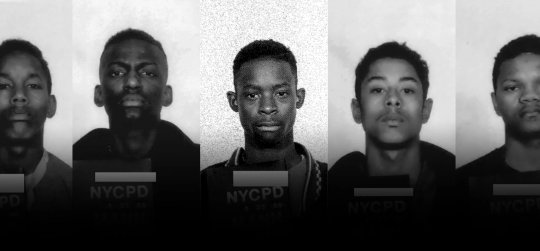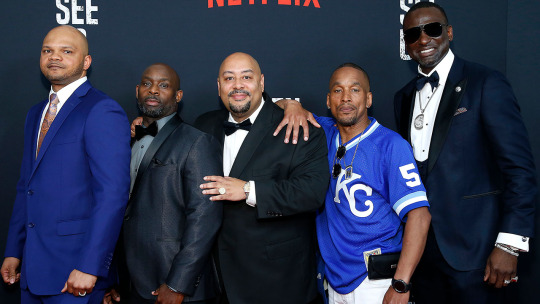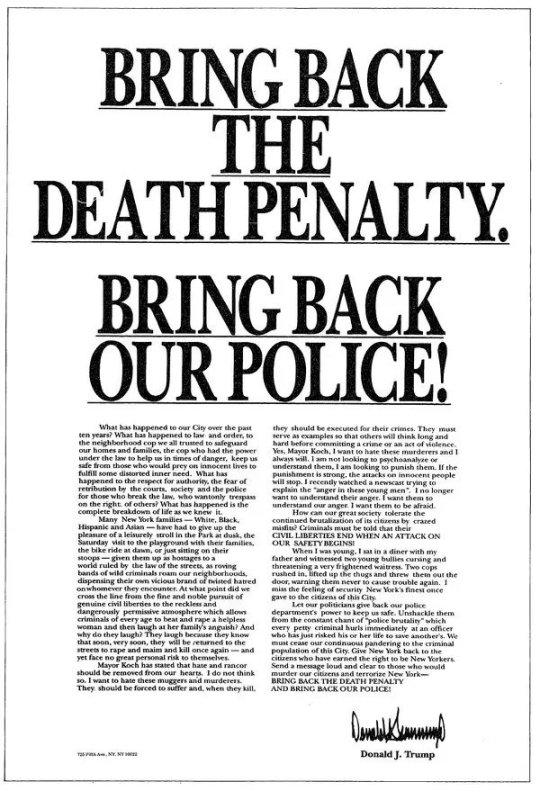Don't wanna be here? Send us removal request.
Text
NAACP
ABOUT
The NAACP is short for the National Association for the Advancement of Colored People, a civil rights organization in the United States, formed in 1909 as an interracial endeavor to advance justice for African Americans by a group including W. E. B. Du Bois, Mary White Ovington, Moorfield Storey, and Ida B. Wells. The NAACP is America’s oldest and largest civil rights organization. It was formed in New York City by white and black activists because of the ongoing violence against African Americans around the country. The NAACP has its own website but can be found on multiple media sites such as Twitter, Instagram, Facebook, and YouTube. The NAACP works to remove all barriers to racial discrimination through democratic processes.
HISTORY
The NAACP was first established in February 1909 in New York City partially in response to the 1908 Springfield race riot in Illinois. In that event, two Black men held in a Springfield jail for alleged crimes against white people were secretly transferred to another city, prompting a white mob to torch 40 homes in Springfield's Black residential district, ransack local businesses, and murder two African Americans.
Since the beginning, the NAACP has worked to achieve its goals through the judicial system, lobbying, and peaceful protests. Oklahoma passed a constitutional amendment in 1910 that allowed people whose grandfathers had been eligible to vote in 1866 to register without having to pass a literacy test. The NAACP challenged the law and won a legal victory when the United States Supreme Court ruled in Guinn v. United States in 1915 that grandfather clauses were unconstitutional. In 1915, the NAACP called for a boycott of the film Birth of a Nation, which portrayed the Ku Klux Klan positively while perpetuating racist stereotypes of Black people. Although the NAACP's campaign was largely unsuccessful, it did help raise the new organization's public profile. Many credit the NAACP report "Thirty Years of Lynching in the United States, 1889-1919" and the public debate that followed with drastically decreasing the incidence of lynching.

During the civil rights era, the NAACP played a pivotal role. One of the organization’s key victories was the U.S. Supreme Court’s 1954 Brown v. Board of Education decision that outlawed segregation in public schools. Another landmark legislation was the Civil Rights Act of 1964, which prohibited discrimination based on race, color, religion, sex, or national origin, and the Voting Rights Act of 1965, barring racial discrimination in voting.
TODAY
Today the NAACP on other media sites and on their own website talk about issues of today such as covid, diversity in entertainment, and climate justice. Their website also talks about education, health and well-being, advocacy, the economy, leadership, and environmental and climate issues. The website includes information on how to join and participate. It tells you where your local NAACP unit is and how you can join. You can also become a partner on the website and sign up for updates. It relates to this class because not only have we talked about racial injustice in the past but recent injustices such as the civil rights movement. The NAACP website focuses on both and educates people about those past movements but also movements that are happening right now.
Citation:
https://www.history.com/topics/civil-rights-movement/naacp#:~:text=The%20NAACP%20or%20National%20Association,African%20Americans%20around%20the%20country.
https://naacp.org/
https://www.youtube.com/watch?v=DWCiEln_hNg&t=1s
youtube
0 notes
Text
Movie- BlacKkKlansman
The BlacKkKansman tells the semi-fictional story of Ron Stallworth, the first black cop hired in Colorado Springs in 1978. His hiring was intended to diversify the force's appearance despite its anti-black racism. With the exception of his physical characteristics, Ron was always perceived as white. Constantly subjected to racial slurs by his fellow officers, he persuades his superiors that his unique abilities are better suited for undercover work. His first task was to infiltrate a black activist student union group led by Patrice Dumas, and to ensure that a black leader speaker, Kwame Ture, does not engage in radical activities during what is expected to be a highly charged speech. Ron also infiltrates the local chapter of the KKK after responding to a newspaper advertisement with a phone call that reaches the national grand wizard, David Duke. When he made phone calls, he used his real name. Because their voices are so different, Ron believes he can get around this by having another undercover cop, Flip Zimmerman, pose as "Ron Stallworth" during any KKK meeting. Flip, who was ethnically Jewish, was never devoted to his faith, similar to Ron in that he was not stereotypically "black." This undercover work completely disrupts Ron's life as he comes to terms with his blackness, especially in relation to Patrice. The deeper Ron and Flip go into the KKK, the more likely it is that their cover will be blown, putting their lives in danger from the many KKK members who are eager to harm black people at any chance.
youtube
Thought out the film there were many parts that caught my attention and imagination. For example, many times the phrases “America first,” and “make America great again” were said by a few of the characters; usually members of the KKK. These unfortunate words are usually tied to those who are proponents of racist rhetoric. Another juxtaposition was when an older black man was telling the story of Jesse Washington and the KKK initiation meeting. Jesse was a mentally challenged teenager who was accused of killing and raping Lucy Fryer a white woman. Jesse was found guilty by an all-white jury, they deliberated for only four minutes. Jesse was chained and paraded through the streets of Waco, Texas, where he was stabbed and attacked before being castrated. This is a contrast between two messages; first Dukes’ messages of hatred and white power, and second the Black Student Union’s message of justice and equal rights. In our third week reading, Mirzoeff’s the Shadow of Substance: Race, Photography, and the Index, we read about photography of lynching. With the pictures also came souvenirs, “His pictures of the burning of Washington's body and the dragging of the corpse through the city were sold at ten cents each; Washington's body parts changed hands for five dollars or more.”
youtube
I love that this movie brought attention to photography of lynching because before this class I have never heard about it and the fact that this movie told Jesse's story and others who had the same fate into the light again. Also, switching back and forth between the stories of Jesse and the KKK were powerful messages of white power and black struggle. This movie also includes scenes from the 1915 movie The Birth of Nation and how it impacted the real world. Like a resurgence of the KKK movement; and how it was the first movie ever screened at the White House. This movie also talked about blaxploitation movies which I have never heard about until this year. Blaxploitation refers to a genre and an important period of cinema history that occurred in the 1970s. While the movies were made for black audiences by black people, it often included harmful stereotypes of African Americans as violent, hyper-sexual, and criminal. This movie ends on a powerful note of how racism still persists today.
youtube
Citations:
Focus Features, “BLACKkKLANSMAN - Official Trailer [HD] - In Theaters August 10.” Youtube, uploaded by Focus Features, 14 May, 2018, https://www.youtube.com/watch?v=pFc6I0rgmgY&t=1s
Fusco, Coco., and Brian Wallis. Only Skin Deep: Changing Visions of the American Self. New York: International Center of Photography in association with Harry N. Abrams, Inc., Publishers, 2003. Print.
Moviclips, “BlacKkKlansman (2018) - The Tragedy of Jesse Washington Scene (5/10) | Movieclips.” Youtube, uploaded by Moveclips, 8 March, 2019, https://www.youtube.com/watch?v=1Aoukxd0GvI
Movieclips. “BlacKkKlansman (2018) - The Ongoing Fight for Equality Scene (10/10) | Movieclips.” Youtube, uploaded by Movieclips, 8 March, 2019, https://www.youtube.com/watch?v=HQrM6Rk7WWE
0 notes
Text
TV- When They See Us
“When They See Us” is a miniseries on Netflix that covers the central park 5, their case, and life after imprisonment. On the night of April 19, 1989, several black and Latino boys were in the park while at the same time a young white woman was being brutally raped. Five black and Latino boys were arrested and convicted of assaulting the women. The men served sentences ranging from 6 to 12 years. Years later all their charges were dropped and eventually the men sued New York and won about $41 million dollars, a million dollars for each year served.

(From left to right; Korey Wise, Yusef Salaam, Antron McCray, Raymond Santana, and Kevin Richardson)

(From left to right, Kevin Richardson, Antron McCray, Raymond Santana, Korey Wise, and Yusef Salaam)
One of the reasons this case is so important is because the men were wrongfully convicted because they are black and Latino, and when seen together they are automatically seen as a threat. Linda Fairstein and the New York police are pushing hard for boys to admit that they are guilty. The boys are coerced into saying they are guilty after telling authorities they were innocent numerous times. The police used unlawful tactics such as hitting them, denying some of them access to their parents; and used physiological tactics of pitting one against another. The police ignored the evidence and overlooked the actual offender who had the same MO because. They unjustly saw the boys as animals, criminals, and grown men when they were just boys who were in the wrong place at the wrong time.
This case is also important because it highlights the racism and race tensions of that time and the racial profiling, discrimination, and inequality in the legal system and in the media. Unfortunately, the story is just another example of a historical pattern of unjust and wrongful convictions of black and Latino young men in the US. According to the Innocence Project, 88 percent of DNA exonerees who were arrested as minors are black, and the majority were tried as adults; 62 percent of DNA exonerees overall are black, and 33 percent of the false confessors were 18 or younger at the time of arrest (Suddler). Even from the very beginning, the boys were seen as criminals by the public because the media reported the boys as criminals. For example, Donald Trump posted an ad calling for the return of the death penalty before the boys were even in court, this ad reached millions which in turn made people believe that the boys were guilty. See the image below. When looking at other rape cases such as the People vs Turner we can see just how clearly the legal system operates based on skin color. Brock Turner was a Stanford University swimmer who was convicted of rape but was only sentenced to six months but was released after only serving just three. This is a prime example of white privilege (Levin). The judge, in this case, didn’t want this to have a “severe effect” on his life because of Turner’s age, where he went to school, and that he was an athlete.

“When They See Us” sheds light on the criminal system and seeks to inspire change. The show has inspired a new generation of social justice activists dedicated to reversing wrongful convictions and reviving mainstream discussions about criminal justice reform in America.
Citations:
Suddler, Carl. “How the Central Park Five Expose the Fundamental Injustice in Our Legal System.” Washington Post, 12 June 2019, www.washingtonpost.com/outlook/2019/06/12/how-central-park-five-expose-fundamental-injustice-our-legal-system.
Levin, Sam. “Stanford Sexual Assault: Read the Full Text of the Judge’s Controversial Decision.” The Guardian, 7 Oct. 2018, www.theguardian.com/us-news/2016/jun/14/stanford-sexual-assault-read-sentence-judge-aaron-persky.
Images:
https://people.com/crime/the-central-park-five-where-they-are-now/
https://www.history.com/topics/1980s/central-park-five
https://www.nytimes.com/2019/06/18/nyregion/central-park-five-trump.html
1 note
·
View note